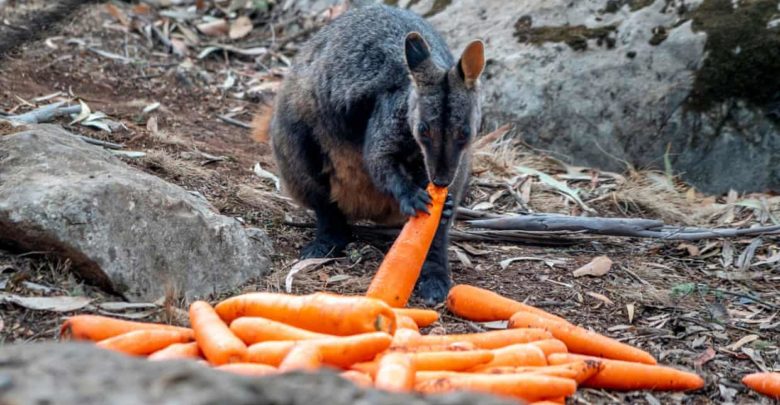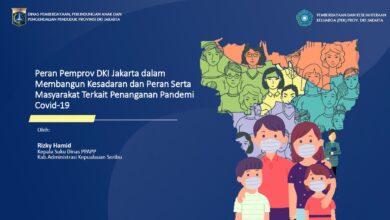
Australia’s continuing bushfire crisis has taken an enormous toll on wildlife, with huge numbers of mammals, birds, reptiles, insects and other species killed.
The ecologist Chris Dickman has estimated more than a billion animals have died around the country – a figure that excludes fish, frogs, bats and insects.
On Monday, the government announced $50m to help rescue and protect wildlife affected by the crisis and environment groups released a list of fauna species for which they hold immediate concerns.
But the list is far from exhaustive and there won’t be a clear picture of the extent of the impact on plant and animal life until experts can access fire-ravaged habitats and conduct assessments.
“This is just the tip of the iceberg,” James Trezise, a policy analyst at the Australian Conservation Foundation, says.
“The number of species and ecosystems that have been severely impacted across their ranges is almost certain to be much higher, especially when factoring in less well-known species of reptiles, amphibians and invertebrates.”
These are some of the species experts hold concerns for:
1. Glossy black-cockatoo (Kangaroo Island sub-species)
Kangaroo Island is home to a unique sub-species of Glossy black-cockatoo and there are grave fears extensive areas of critical habitat have burned in fires that have devastated two-thirds of the island. In particular, there are concerns for the birds’ nesting habitat. Two decades of conservation work by the Kangaroo Island community had brought numbers from as low as 150 in the 1990s to as high as 400 before the fires. Preliminary analysis suggests 50%-60% of their habitat has burned.
2. Kangaroo Island dunnart
Even before the fires, there were concerns for the future of the Kangaroo Island dunnart, a small marsupial found nowhere else in Australia. The species is listed as endangered under national environment law and there are fears the fires may have wiped out the animals. Ecologists have spoken about how cameras they set up to monitor the species in its habitat melted in the flames.

The endangered Kangaroo Island dunnart, photographed with a sensor camera during a private land survey, west end of Kangaroo Island. Photograph: KI Land for Wildlife
3. Koala
The fires in northern New South Wales in October and November tore through key koala habitat in areas including Port Macquarie. Fires in East Gippsland in Victoria have also burnt through bushland where the species is found. Additionally, the species was introduced to Kangaroo Island in the 1920s and the island is home to Australia’s only populations of the species that are chlamydia-free. Thousands of animals are estimated to have died in the disaster, however there are populations in other parts of the country that are not fire-affected.

Humane Society International’s disaster relief team visit the Kangaroo Island Wildlife Park which is caring for koalas and other stricken wildlife. Photograph: Evan Quartermain/Humane Society International
4. Hastings River mouse
The Hastings River mouse is a small rodent that was already endangered under national environment laws before fire tore through its habitat in northern NSW. It is one of the species that experts will be looking to assess on the ground as not much is known about how it responds to fire. There are populations outside of fire-affected northern NSW, but the impact on its habitat in that region is believed to be large.
5. Regent honeyeater
Experts fear fires throughout NSW have destroyed habitat in several key parts of the state occupied by the critically endangered regent honeyeater. Before the fires, less than 400 birds remained in the wild. Birdlife Australia says preliminary analysis suggests habitat in Lake Cathie, Dunbogan and from Forster to Old Bar has been affected by fires. One of the species’ main breeding strongholds is in the Capertee Valley, north of Lithgow, where bushland has burned as a result of the Gospers Mountain fire. The nearby Wolgan Valley is also a site used by the birds. Finally, nesting habitat in Burragorang is feared destroyed by the Green Wattle Creek fire.

The regent honeyeater was already one of Australia’s numerous critically endangered animals before recent bushfires spread through several of its remaining habitats. Photograph: Henry Cook/Getty Images
6. Blue Mountains water skink
This endangered reptile is unique to the Blue Mountains, where fire has burnt much of the world heritage area. Large tracts of habitat for the Blue Mountains water skink have been destroyed.
7. Brush-tailed rock-wallaby
The brush-tailed rock-wallaby is listed as a vulnerable species nationally, and endangered in NSW. When fires destroy native vegetation they reduce the available habitat and food for species, even if they survive the blaze. The NSW National Parks and Wildlife Service has been conducting air drops of carrots and sweet potatoes for brush-tailed rock-wallabies in areas including the Capertee and Wolgan valleys, Yengo national park, Kangaroo Valley, Jenolan, Oxley Wild Rivers and Curracubundi national parks.

A brush-tailed rock wallaby, in the snow at the threatened native animal reserve Aussie Ark at Barrington Tops, NSW in August 2019. Photograph: Lachlan Gilding/Aussie Ark
8. Southern corroboree frog
The fire at Dunns Road in NSW, now part of a mega-blaze, is making a slow march through alpine country in the Kosciuszko national park. The northern part of the alps is a stronghold for the southern corroboree frog, which is critically endangered. Experts also hold fears for the northern corroboree frog if fire moves into the Namadgi national park. The area is not far from Ginini Flats where the northern corroboree frog is found.
9. Quokka
Bushfires in the Stirling Range in Western Australia have destroyed key mainland habitat for the quokka. While the species has its stronghold on Rottnest Island, its mainland populations are feared to have taken a major hit as a result of the bushfires. Fires also make the animals more vulnerable to predators such as foxes and cats.

Mainland populations of quokka are feared to be affected by recent bushfires. Photograph: EyeEm/Alamy Stock Photo
10. Western ground parrot
The critically endangered western ground parrot is one of Australia’s species most threatened with extinction. Less than 150 individuals remain in the wild and a key threat to the remaining population in Cape Arid national park is fire. A bushfire before Christmas stopped just short of the bird’s habitat, but experts fear it’s only a matter of time before a fire goes through the area.
11. Northern eastern bristlebird
The northern eastern bristlebird lives in a small and shrinking part of north-eastern NSW and south-eastern Queensland. It is estimated there were fewer than 50 left in the wild before this fire season, and its habitat has been reduced by more than 50% since the 1980s. It is critically endangered. Samantha Vine, of Birdlife Australia, said some of its Queensland habitat had been lost to fires, but it was too early to know what had happened to its stronghold in NSW. “With such a small population, the loss of any habitat and individuals is of grave concern.”
12. Greater glider
Fires in NSW and Victoria have burnt large areas of habitat for this small marsupial. Greater gliders are already listed as vulnerable under national environment law and the species was already suffering population declines in many areas before the fires. Experts say the bushfire crisis will only increase the pressure on this species. Greater Gliders do have some key habitat in the Strathbogie Ranges in Victoria that, fortunately, has been unaffected by fires so far this season.

Greater glider at night. Photograph: Alamy Stock Photo
It will take time until the real toll is known
Euan Ritchie, a wildlife ecologist at Deakin University, said some ecosystems would be able to recover in a few years, others would take decades, and some more than a century.
Some, he said, “may not ever recover to anything like their former condition”.
“To really assess the impact of these fires properly, we need to get into areas once it’s safe to do so, and begin the work of surveying plant and animal populations,” he said.
“Of great concern is that some of these burnt areas may burn again in the near future, due to the impacts of climate change.”
Artikel ini telah tayang di theguardian.com dengan judul “A billion animals: some of the species most at risk from Australia’s bushfire crisis”, https://www.theguardian.com/australia-news/2020/jan/14/a-billion-animals-the-australian-species-most-at-risk-from-the-bushfire-crisis
Penulis : Lisa Cox
Foto Cover : A wallaby eats a carrot air-dropped in bushfire-hit areas around Wollemi and Yengo national parks by the NSW National Parks and Wildlife Service. Photograph: NSW Department of Planning, Industry and Environment/Reuters



